Queen's funeral: The Cambridge bell-ringers who feel 'part of something bigger'
- Published

Lena Van Dongen, 19, is one of the youngest bell ringers at Great St Mary's Church
During his time as an undergraduate at Cambridge from 1967 to 1970, the future King Charles III visited and climbed the tower of the university church, Great St Mary's. On the day of the Queen's funeral, the church's current bell-ringers shared what it was like to be a part of such a key moment in British history.
"It has been quite strange to think I am part of something so big and important across the country," says Lena Val Dongen.
About to start her second year at Cambridge, the 19-year-old joined the 16-strong bell-ringing team at Great St Mary's less than a year ago.
Inspired by a bell-ringing friend of hers, Ms Van Dongen took part in a course run by the Cambridge University Guild of Change Ringers and has been ringing ever since.
"I really enjoy it," she says.
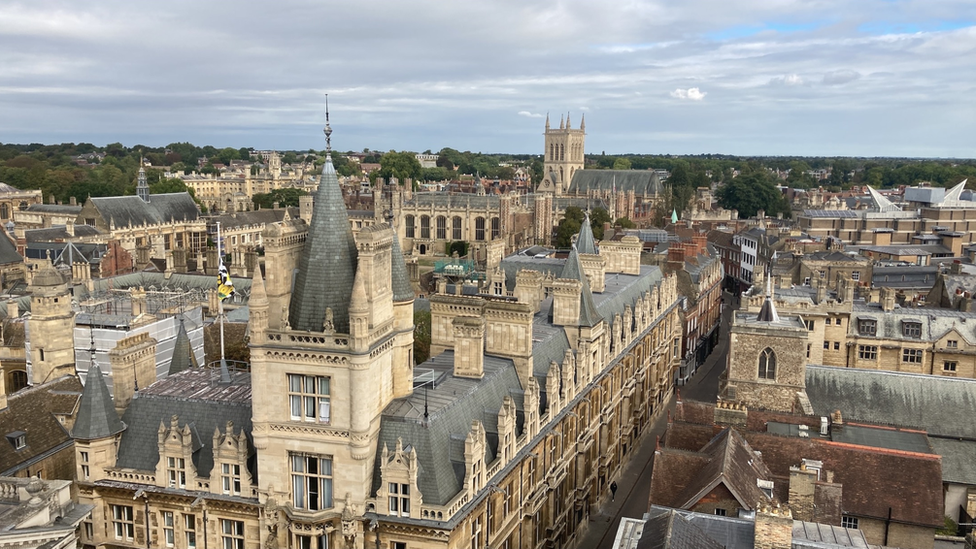
Much of the university city can be seen from the tower of Great St Mary's Church
She was part of the team which rang the bells throughout Monday morning ahead of the Queen's funeral.
Asked what the past 10 days since the Queen's death had been like, she says: "It has been interesting being part of such a big event so soon because there has been a lot of ringing, especially the day after she died.
"There was ringing across the country so it was great to be part of that.
"Of course, all the bells are muffled, which changes it a lot. It makes the ringing a lot quieter, which makes it harder to hear what you are doing, so you have to much more focused on the people around you."
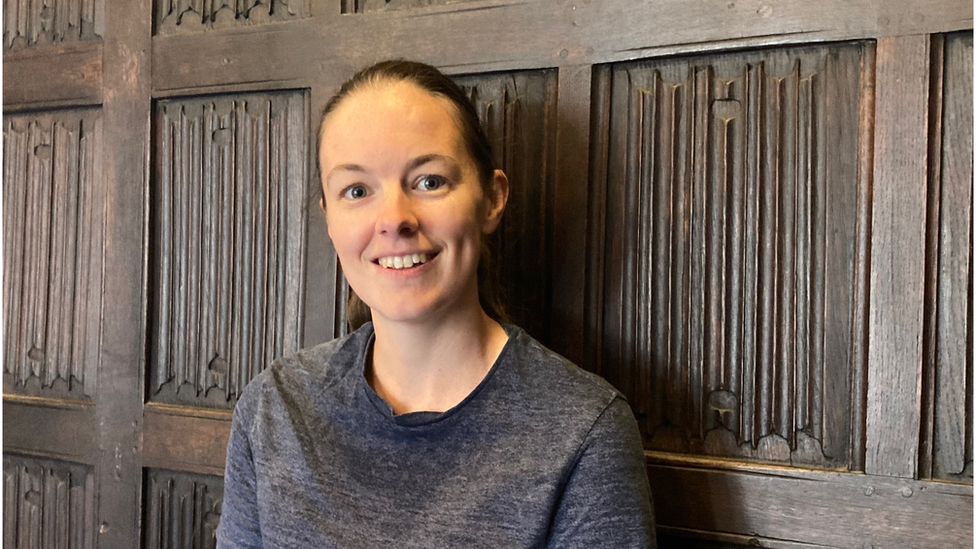
Catriona Agg tells how the bells of Great St Mary rang for more than three hours the day before the Queen's funeral
"There's been a lot more ringing than we would normally do," says Catriona Agg, 32. "We did three and a half hours yesterday, half muffled.
"I've had a bit of a crash course in putting muffles on to bells, which was not something I had to do before.
"When they are full muffled the sound should be softer and the hum should last longer. It is less open, clear and bright and is more sombre and we do it for funerals.
"There's definitely a sense of being part of something bigger."

Muffled or half-muffled?
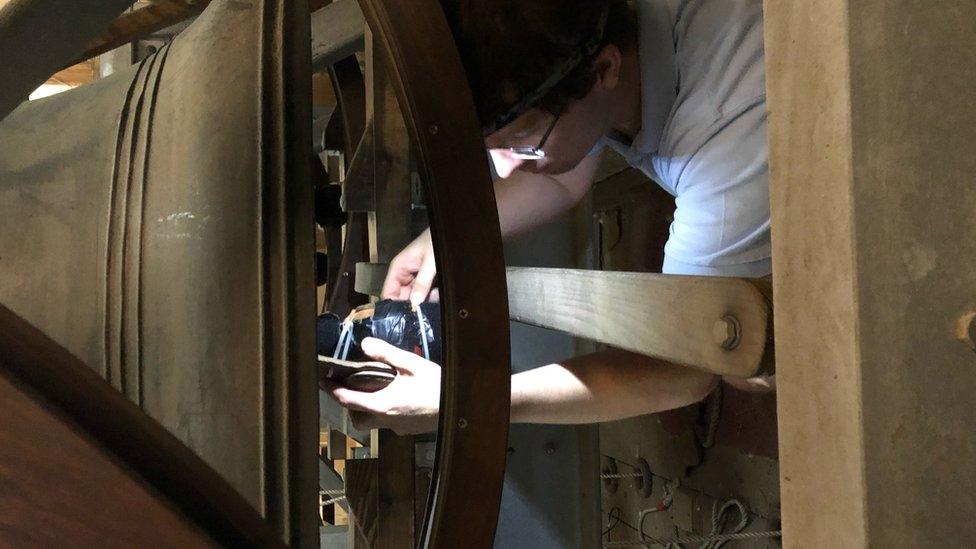
=
Since the the Queen's death, the bells have been half-muffled with a pad on one side of the clapper
The bells are rung half-muffled on Remembrance Sunday and occasionally for funerals
For the day of the funeral, the bells were muffled on both sides
The mufflers at Great St Mary are held in place with tape and cable ties
The church has 12 bell ringers at work at any one time

Retired academic Frank King, 80, first rang bells in Cambridge as a student in 1961.
He was at school when George VI died and was issued with a black tie.
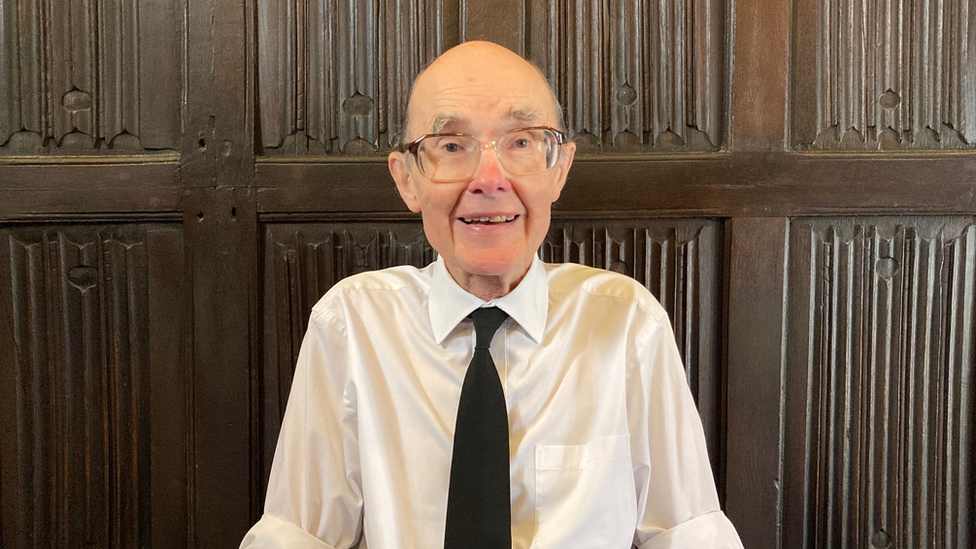
Frank wore the same tie as he did during the funeral of George VI
He wore that tie once again while ringing the bells for the Queen's funeral.
"I thought this was a rather good occasion to wear it again," he says. "Here we do ring regularly for royal occasions - royal birthdays, particularly of the monarch and the heir, and for the accession, so we are accustomed to ringing on royal occasions."
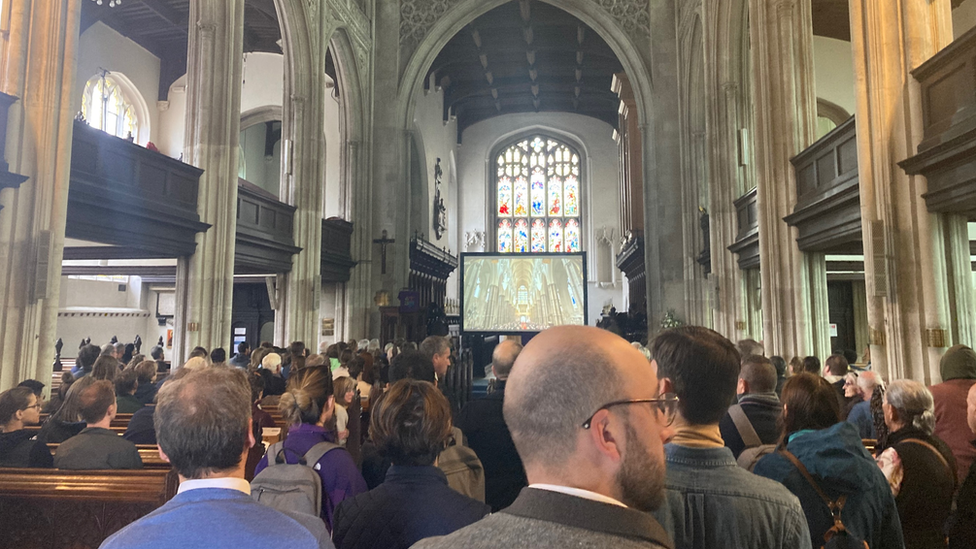
Mourners gathered at the church to watch coverage of the Queen's funeral
Liz Orme has been a bell ringer since the age of 11.
She has twice been the ringing master at Great St Mary's.
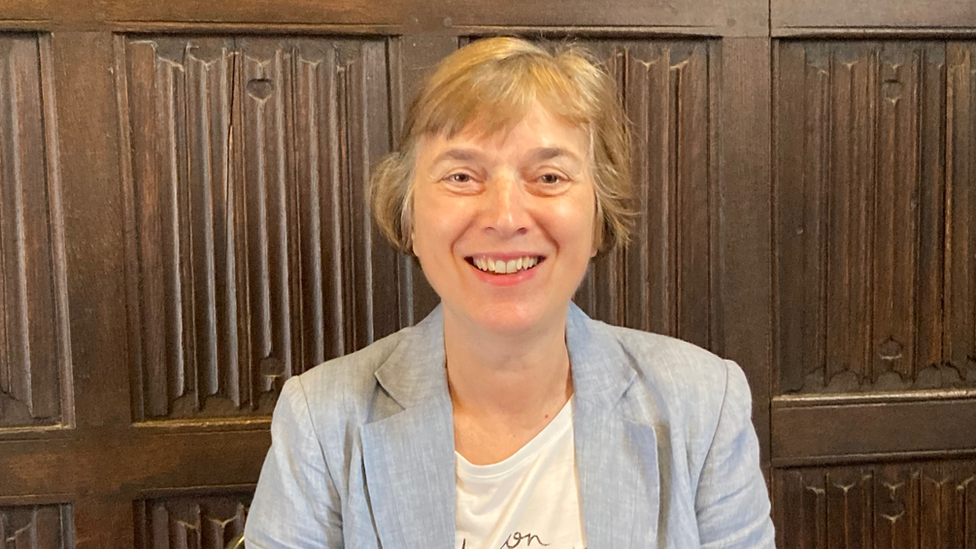
Liz Orme drew up the action plan for the church's bell ringing in the event of the Queen's death
"At Cambridge we are steeped in tradition and therefore we thought it necessary and important to make sure we understood what we needed to do in the event of the demise of the crown ," says Ms Orme.
"I put an action plan together, basically, to make sure we all knew what we needed to do.
"The plan has three key elements to it. The first was the announcement of when the death happens and when we need to toll the bell.
"The next part is the proclamation of the new monarch and the third and final part is today, the funeral.
"We go from ringing or tolling the bells half-muffled, cancelling ringing the bells open and then, today, ringing them fully muffled with just the tenor striking.
"It feels like a duty and a duty I feel pride in fulfilling."



Find BBC News: East of England on Facebook, external, Instagram, external and Twitter, external. If you have a story suggestion email eastofenglandnews@bbc.co.uk, external